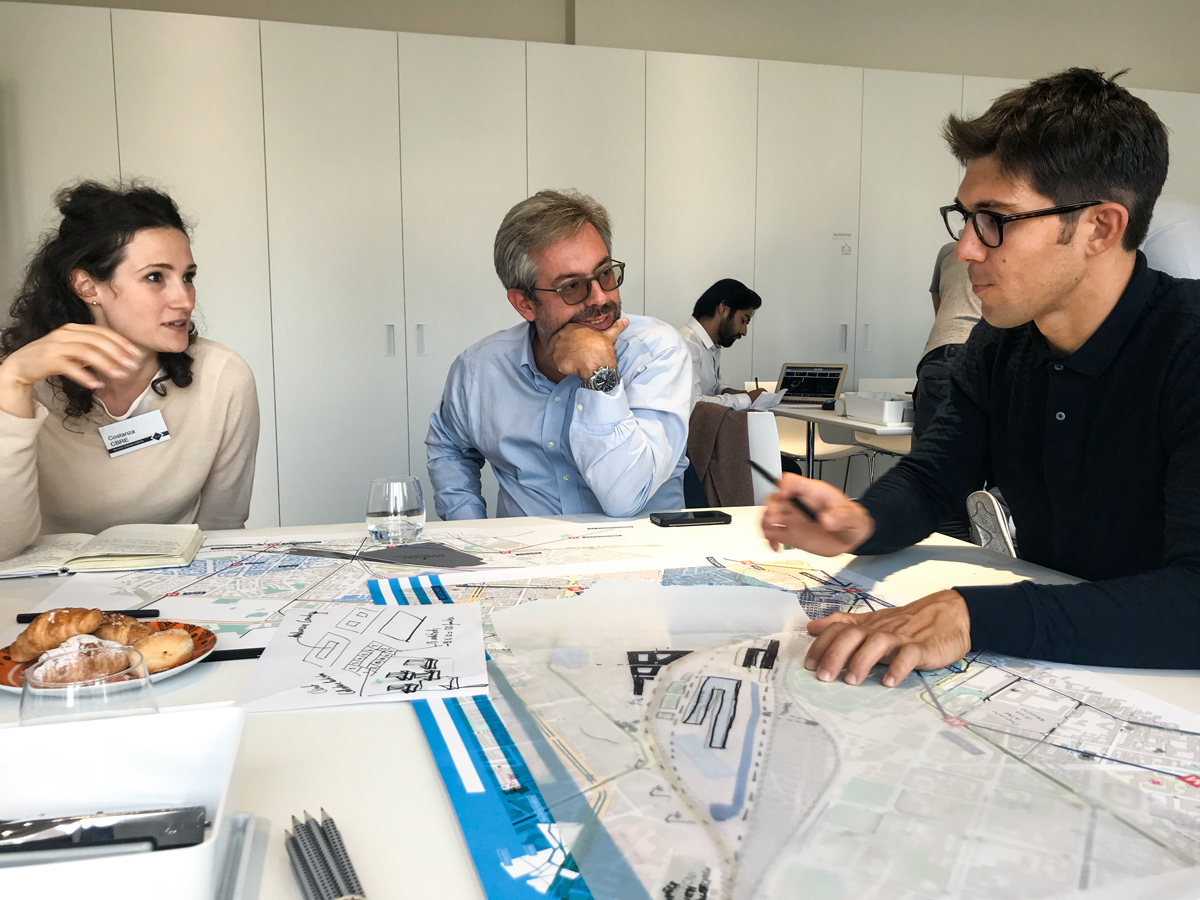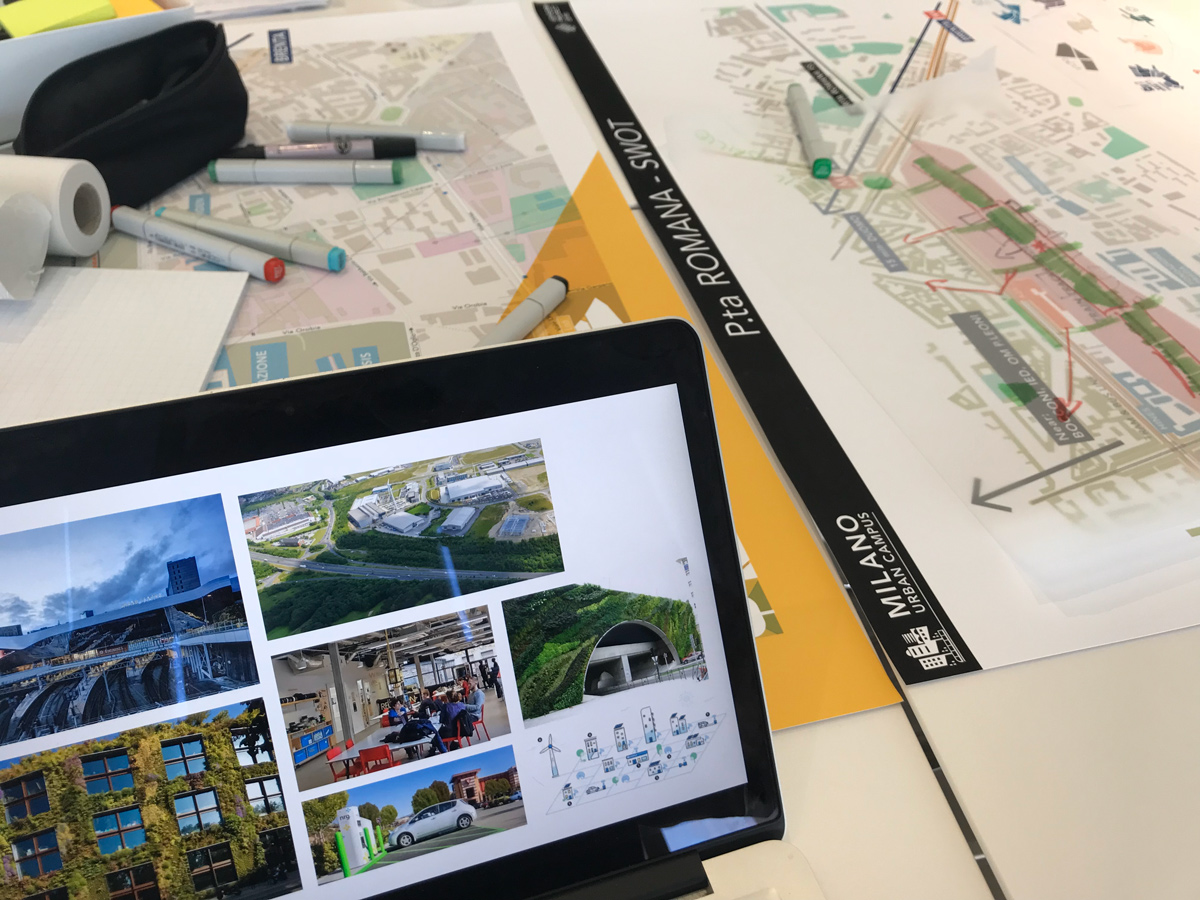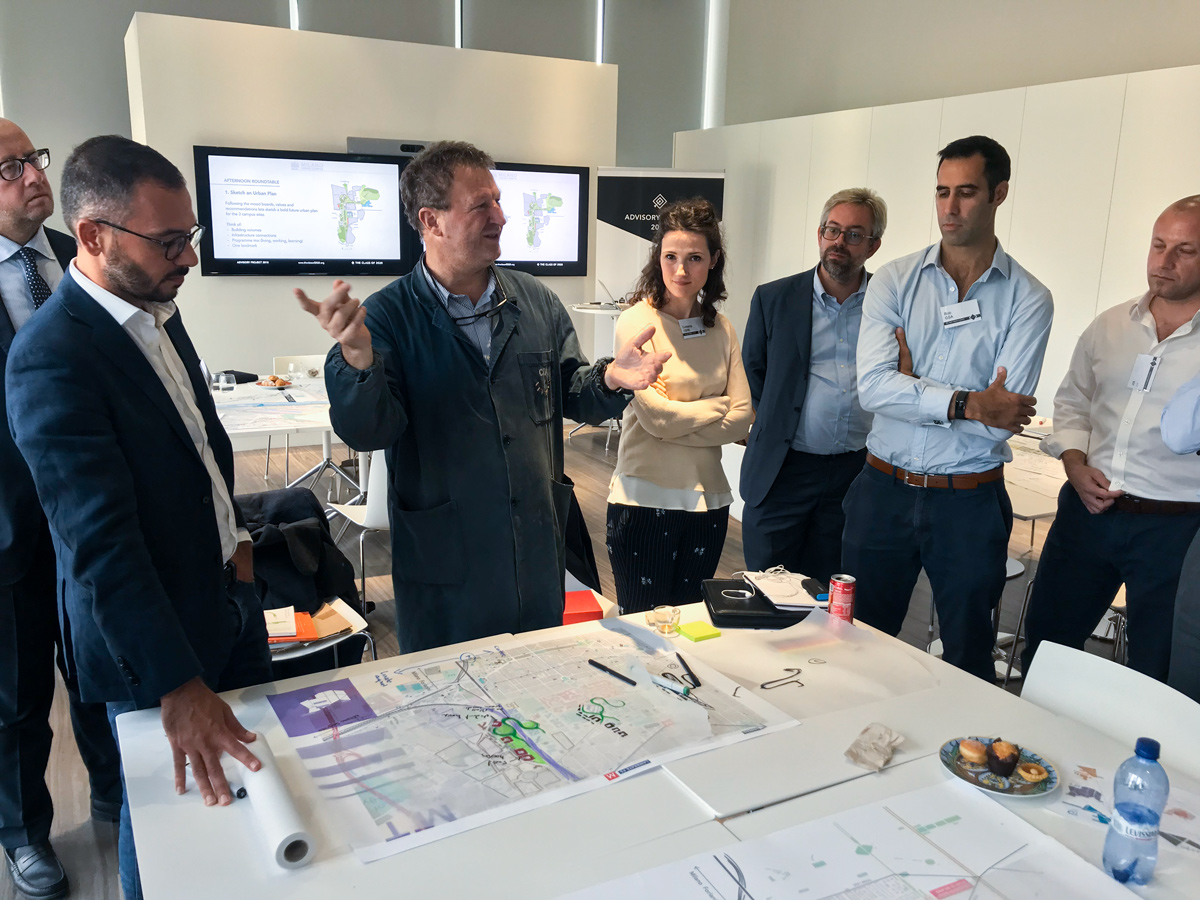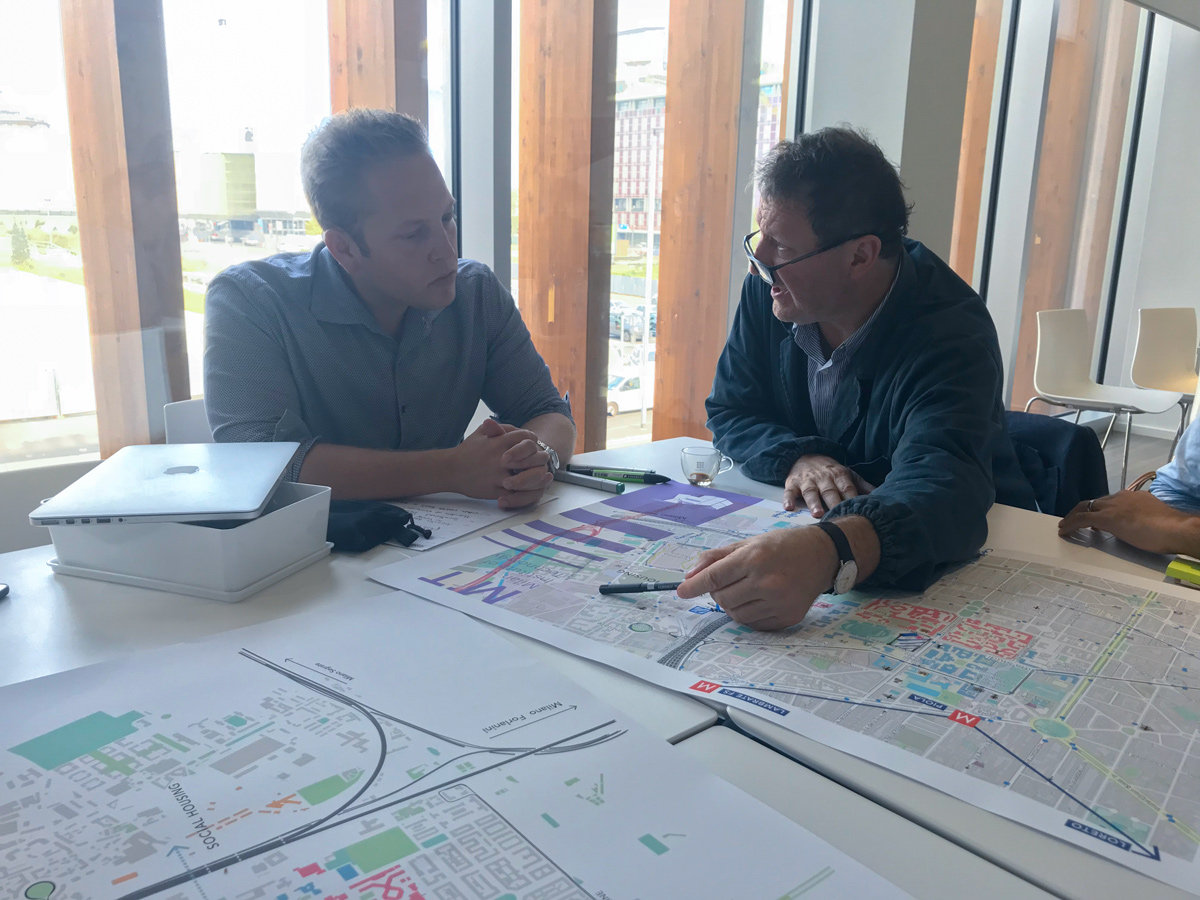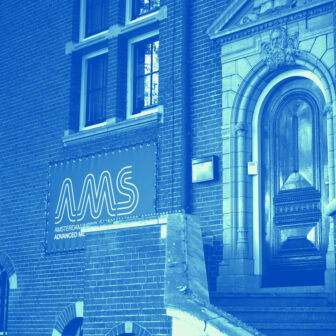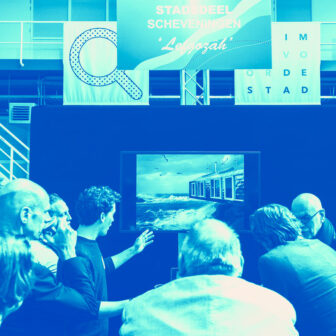Milano Urban Campus
Sector
Corporate Urbanism
Services
Place Vision
Team
Jorick Beijer
Christian Pappalardo
Partners
Cino Zuchi Architects
Politecnico di Milano
COIMA
CHALLENGE
To reimagine the centre of Milan as a connected urban campus through the regeneration of three abandoned rail yards owned by FS Sistemi Urbani. These sites are the last resort to accommodate the city’s projected rapid growth in the next decade, facilitate its leading university campuses to find their way back into the top 100 global education rankings, while at the same time reuniting disconnected neighbourhoods and enabling economic growth in a more inclusive way.
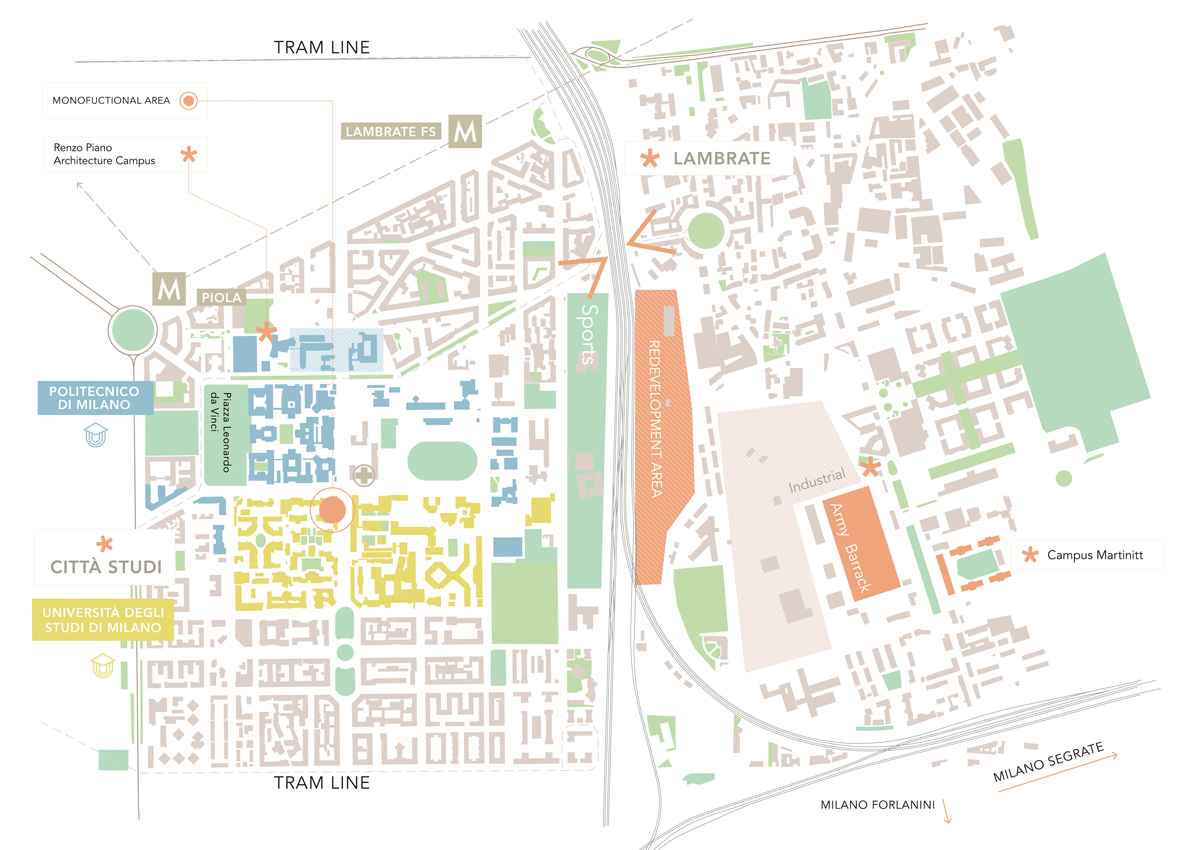
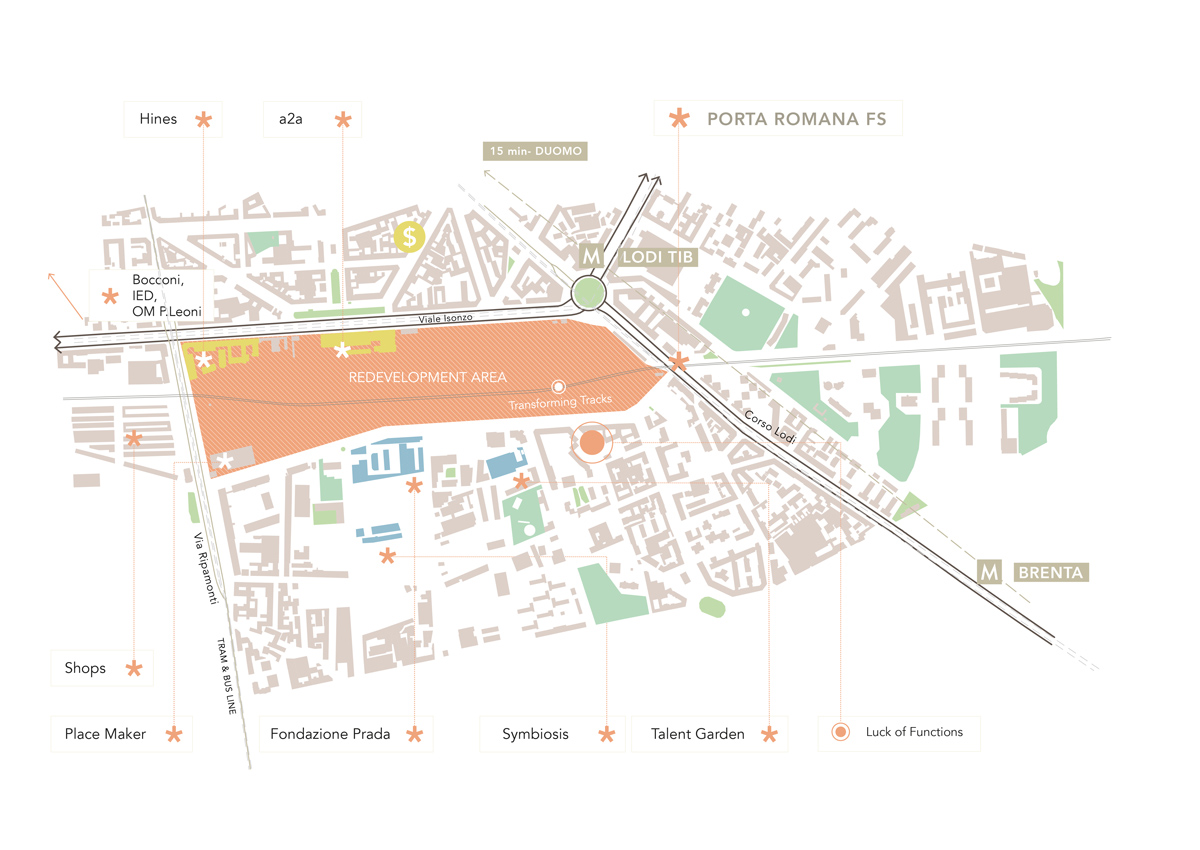
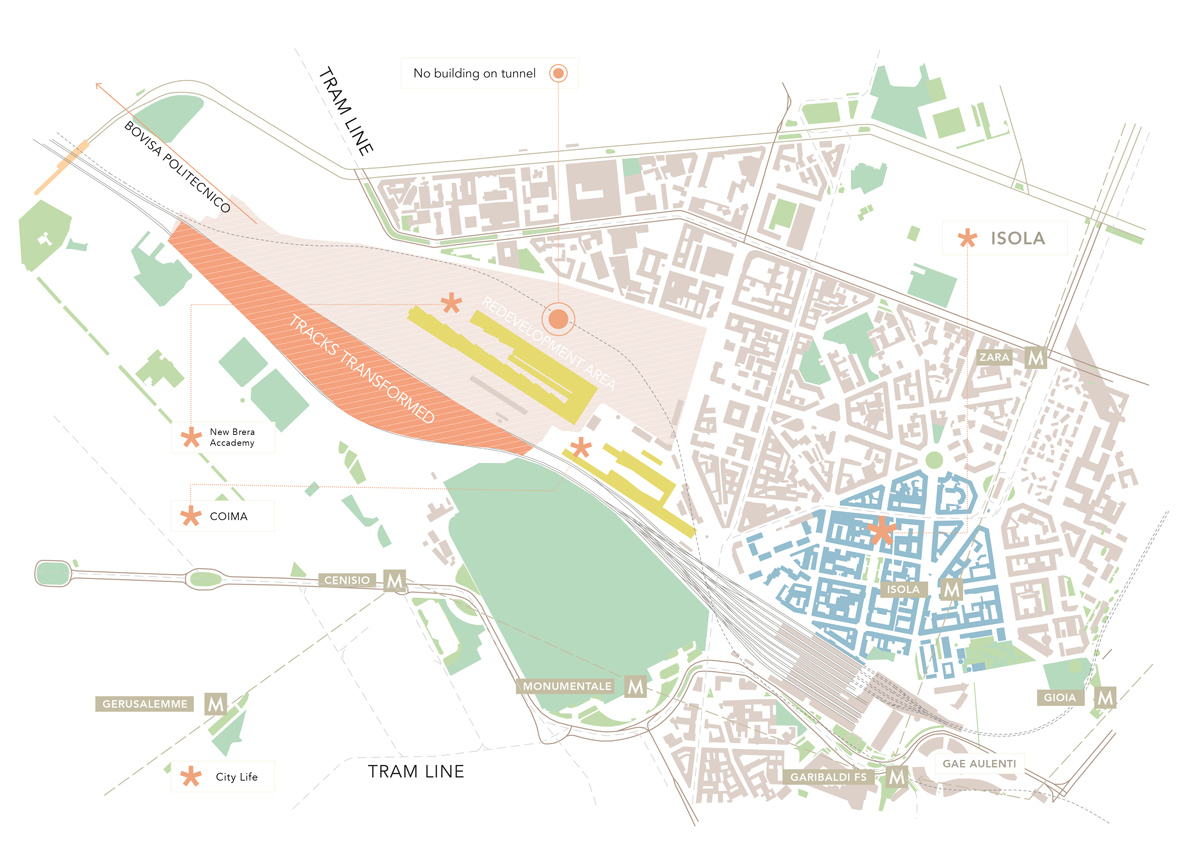
RESPONSE
We started by benchmarking Milan against international talent hubs competing for talent. Milan’s talent ecosystem is rich but because of the low number of English-taught programmes is not very accessible and spatially disconnected from the urban fabric of the city. Blossity curated a number of best practices in the space of university-led urban regeneration, international branch campuses, and talent-oriented city branding.
We then brought together a powerful coalition around the concept of the ‘urban campus’. The urban campus places the university at the centre of urban regeneration, leveraging the power of talent as a catalyst for transformation. We challenged the coalition with a few ‘What-if’ questions: What if innovation becomes the norm and learning an essential part of our ‘working’ life? What if future skills in a changing labour market require life-long learning? What if Città Studi would function like the MIT of Italy? What if the Parsons School of Design would open a branch campus in the army barracks of Milan Lambrate? What if we develop ‘negative zoning’ describing what a plot should not become?
Finally, we used our futuring methodology and co-created a framework for Milan as a city-wide talent ecosystem. This became a guide for the three urban campuses, rooting them functionally in the Milanese ecosystem. In a series of hands-on workshops, we then formulated spatial scenarios for Porta Romana, Scalo Farini, and the connection between Città Studi and Lambrate. These scenarios were translated into a set of tangible strategies and policy recommendations on city branding, urbanism, and public-private investment.
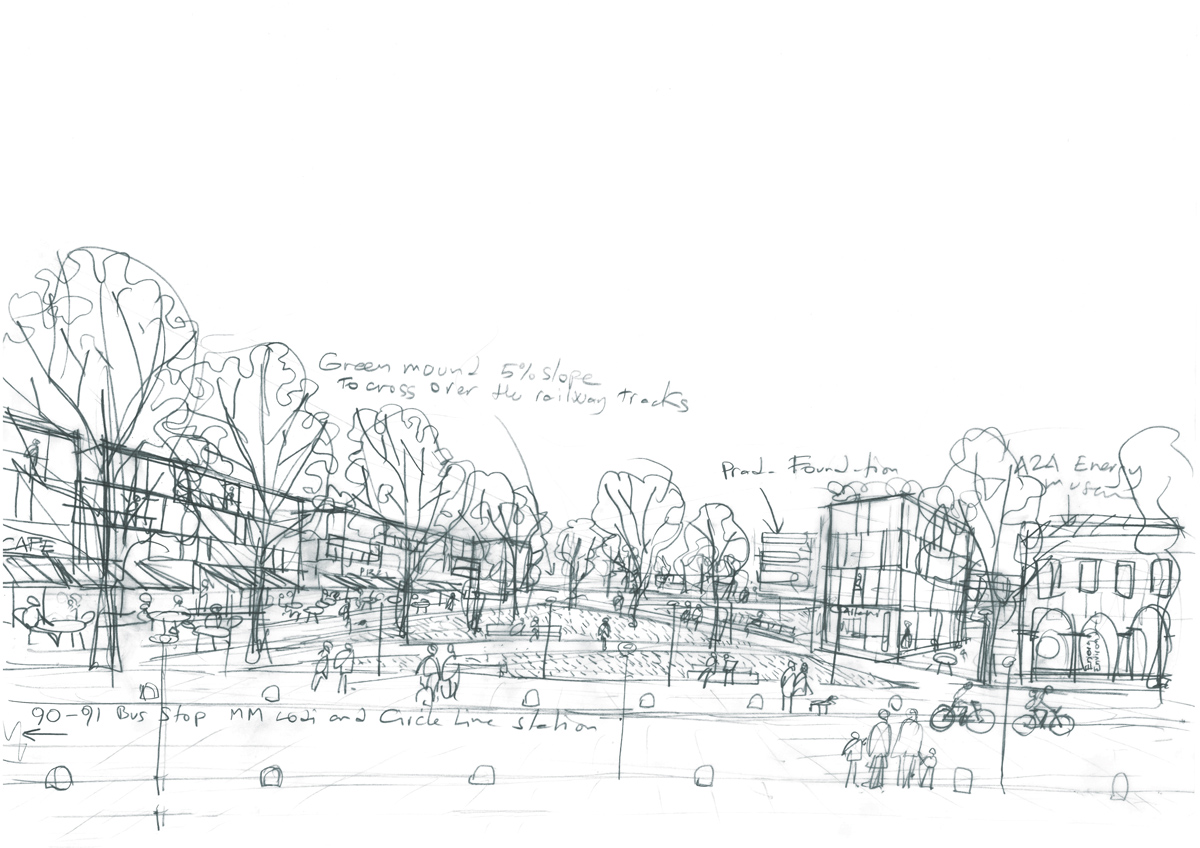
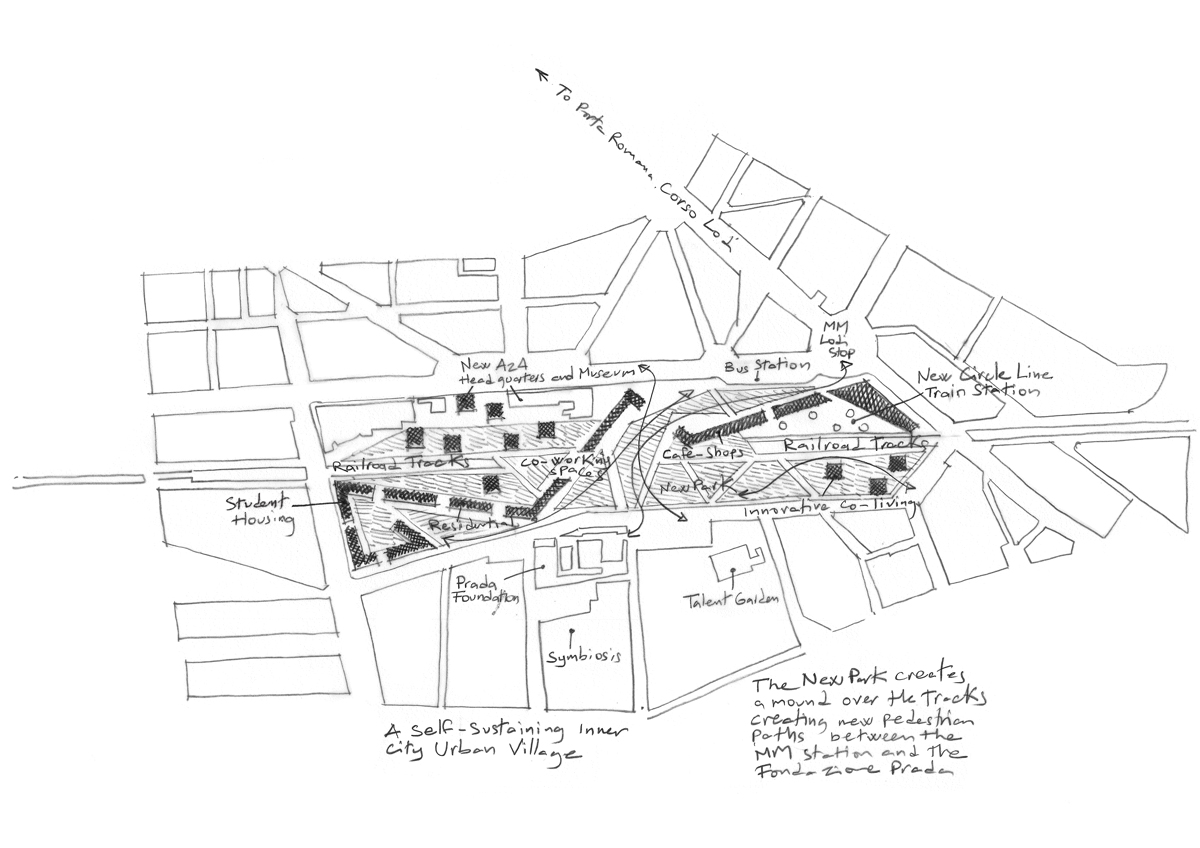
PORTA ROMANA

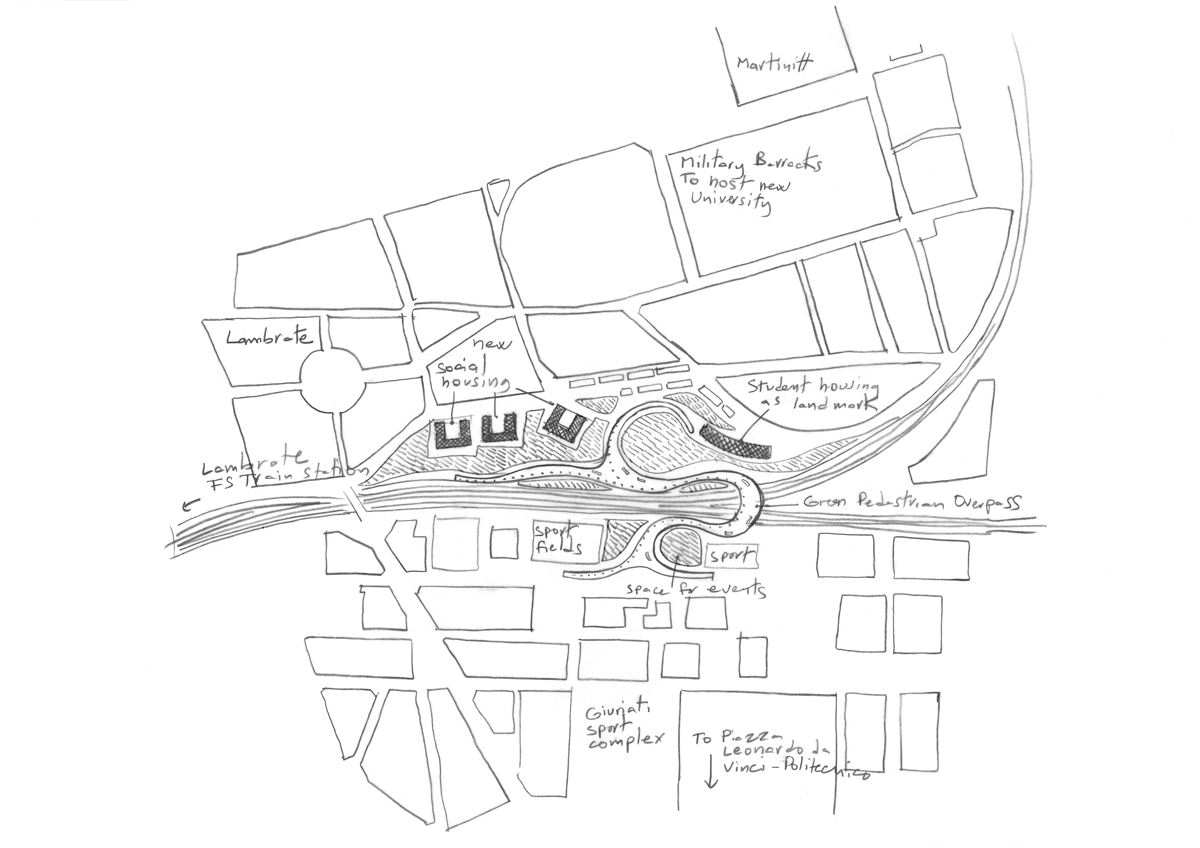
LAMBRATE / CITTÁ STUDI
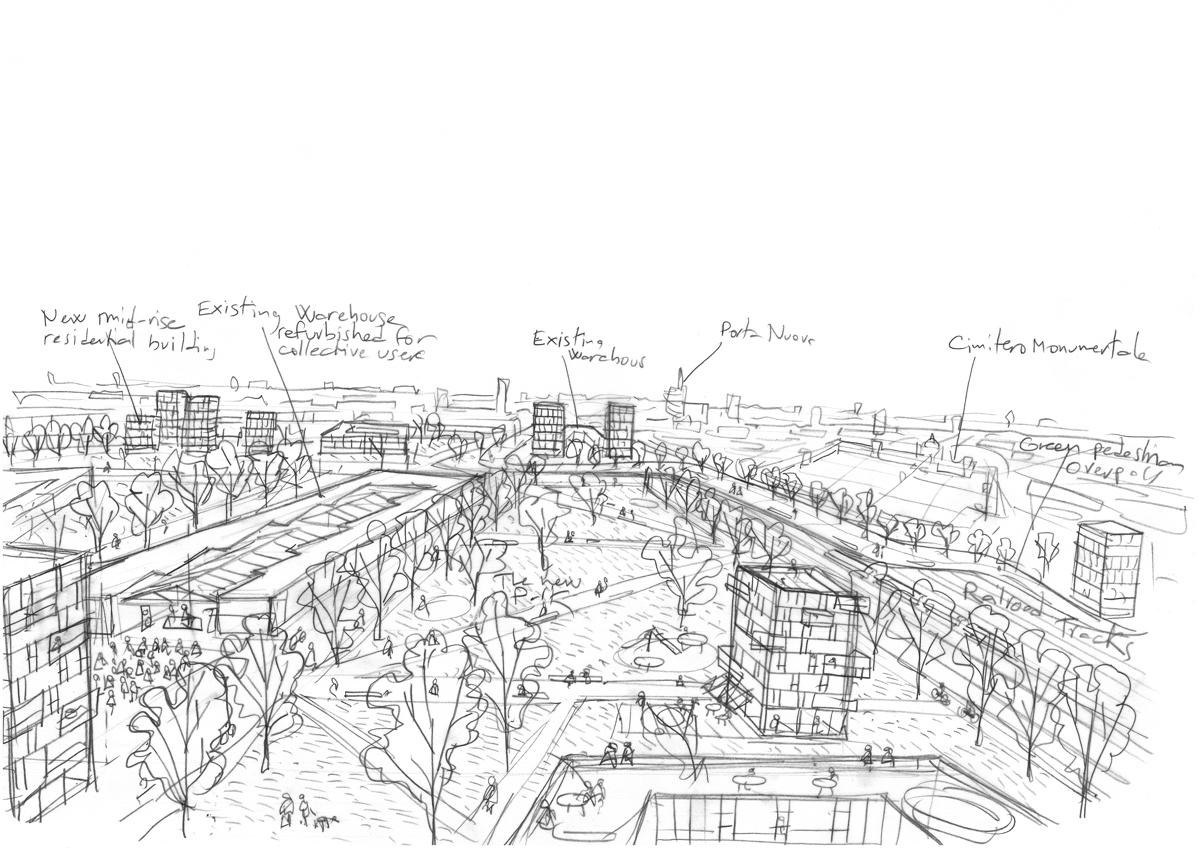
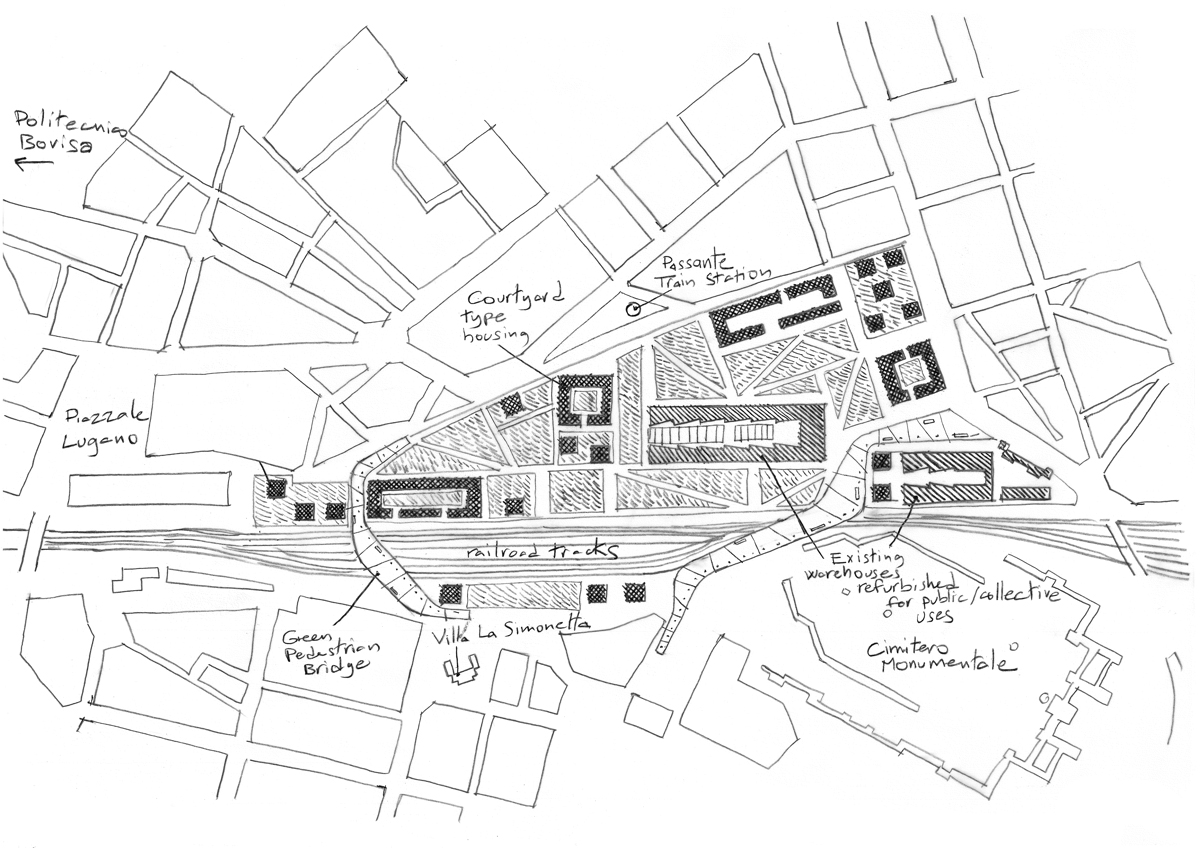
FARINI
THE IMPACT
The Milano Urban Campus proposal ties into the Mayor’s Office work on Plan 2030 – the new urban agenda for Milan. Beyond the place branding framework and three hyperlocal spatial scenarios, this project brought together a diverse group of stakeholders committed to investing in the future of Milan as a global talent hub.
